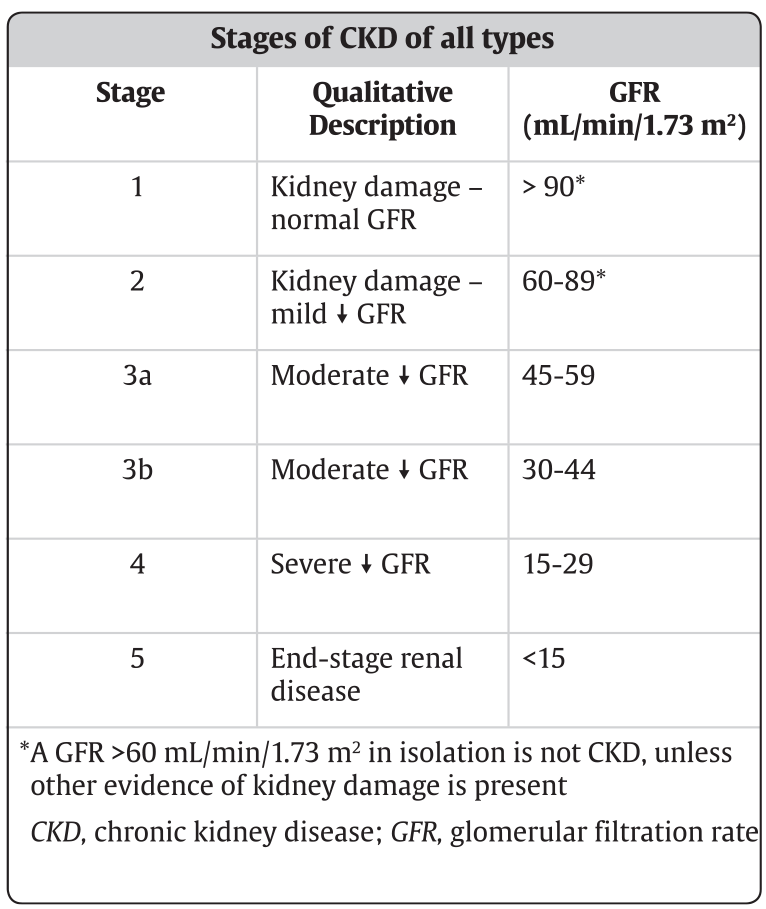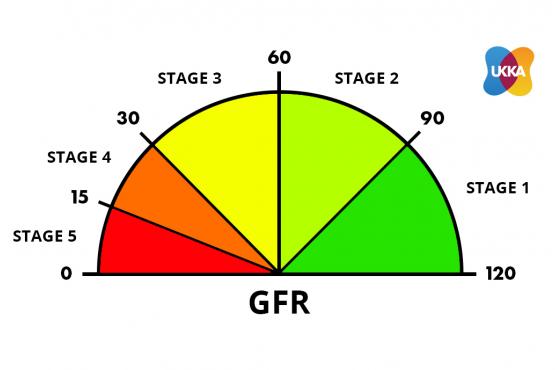What is end-stage renal failure (ESRF) or disease (ESRD)?
End-stage kidney failure (ESRF) or disease (ESRD), or kidney failure, is also called Stage 5 CKD. This the fifth and final stage of chronic kidney disease (CKD) progression.
It occurs when the estimated GFR (eGFR) is under 15 ml/min.


Courtesy of UKKA
At this point, you need treatment – either dialysis or a kidney transplant (called renal replacement therapy, RRT) – to survive.
Some patients, especially elderly ones, prefer not to have dialysis or a kidney transplant. This is called ‘supportive care’ and is not illogical. They may live longer, and with a better quality of life, without it.
Life expectancy with ESRF if you have RRT (dialysis or a kidney transplant)
On average people will live 5 years from the start of RRT, 3 years or less with higher risk causes of CKD such as diabetic nephropathy or renovascular disease (RVD).
Patients over 80 years, usually live about 2 years or less.
Life expectancy with ESRF if you do not have RRT (dialysis or a kidney transplant)
You will pass away in 2-6 months.
Prevention of ESRF/ESRD
There is no cure for end-stage renal failure. So available treatments are designed to reduce complications and symptoms. Thus, the key to improving long-term outcomes is preventing the progression of CKD. If ESRF is going to occur, early referral for transplantation is very important.
Last Reviewed on 22 June 2024
